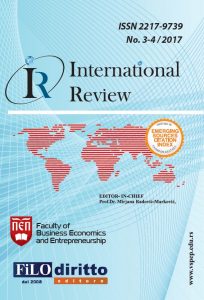Examining and comparing the economic effects of spillovers of investment risk in Iran: Computable general equilibrium model approach
Examining and comparing the economic effects of spillovers of investment risk in Iran: Computable general equilibrium model approach
Author(s): Pardis Alsadat SEYEDMASHHADI, Seyed Abdolmajid JALAEE, Mehdi NEJATI, Mohsen ZAYANDERODISubject(s): Economy, Business Economy / Management, Accounting - Business Administration, Business Ethics
Published by: Visoka škola za poslovnu ekonomiju i preduzetništvo
Keywords: Risk spillover; Investment; Computable General Equilibrium Model
Summary/Abstract: Investment is as much as important for economic and social development that it is considered as one of the powerful levers for achieving the development. Accordingly, it is of great importance to assess the investment risk and its spillovers in all developed and developing countries because the risk phenomenon is one of the key features of decision making in the field of investment, affairs related to financial markets and a variety of economic activities. In this regard, the present paper evaluates the effect of investment risk spillover on key economic indicators using a computable general equilibrium model and the GTAP.9 database and the 2011 social accounting matrix (SAM) have been used for this purpose. Two scenarios of 10% and 3% increase in investment risk are considered in order to investigate the effect of these changes according to a recent trend analysis of economic indicators in Iran and the trend of the Iranian economy towards globalization and opening of the economy windows. The results show that both scenarios reduce investment risk, inflation, gross domestic product and total investment. Government expenditures are reduced in all sectors of the economy except for the service sector, which is almost unchanged. The exports are increased in all sectors and the imports are declined in sectors of agriculture, industry and services. As well as, the results show that the import of the oil and gas sector has not been heavily influenced by the investment risk due to its governmental status. By assessing these two scenarios and the sensitivity of the macroeconomic indicators to the degree of risk change, it can be stated that the key economic indicators will be significantly improved by managing the risk of investment; and the country will ultimately follow the development path more quickly.
Journal: International Review
- Issue Year: 2017
- Issue No: 3-4
- Page Range: 24-33
- Page Count: 10
- Language: English

